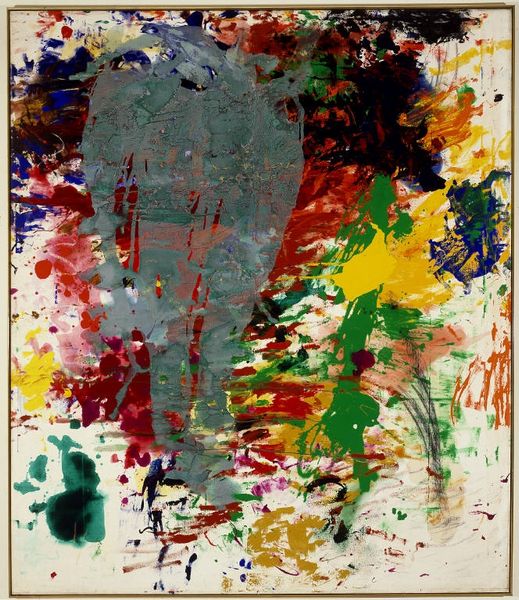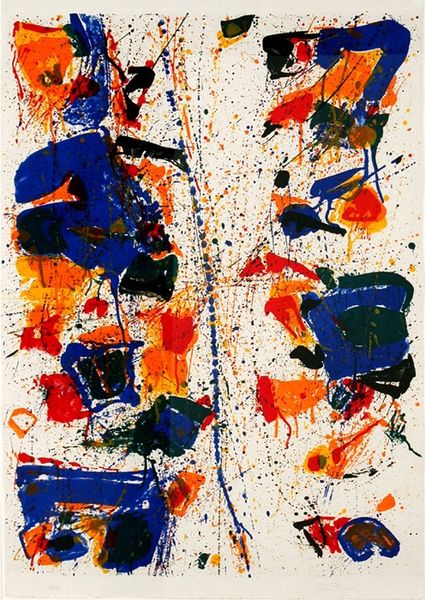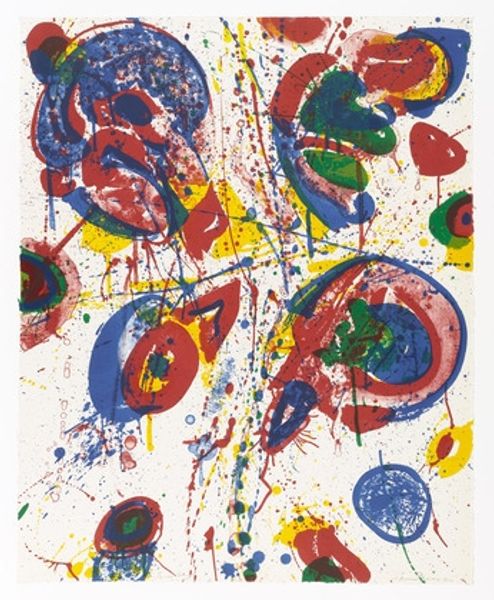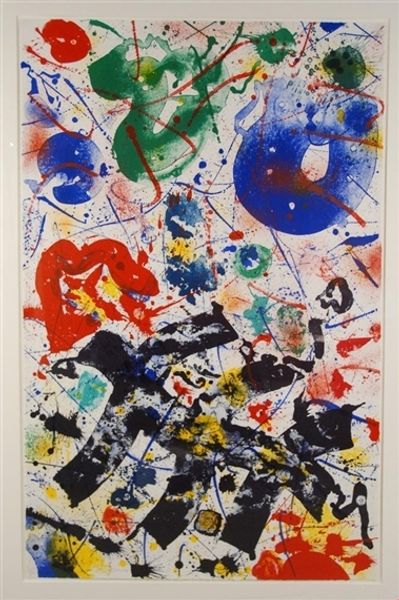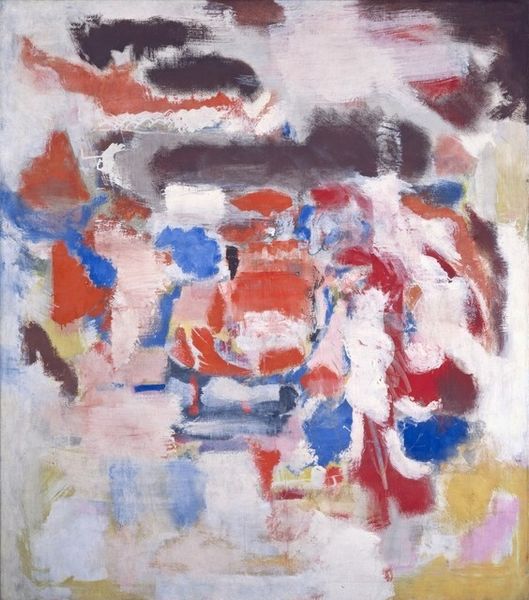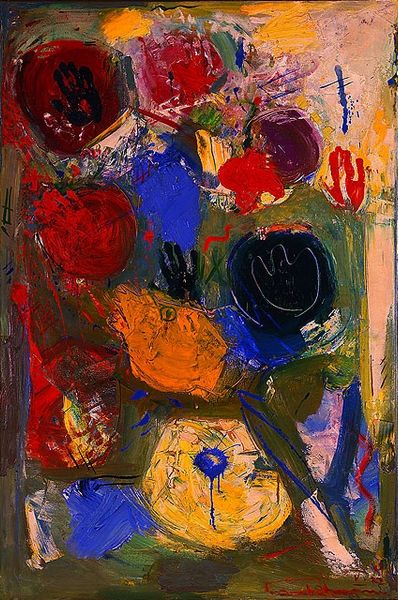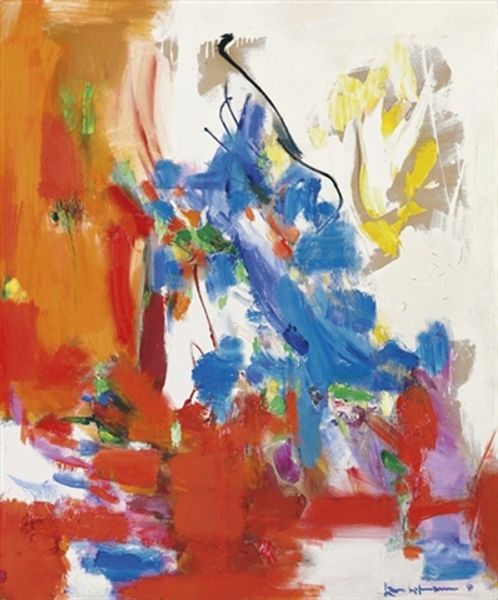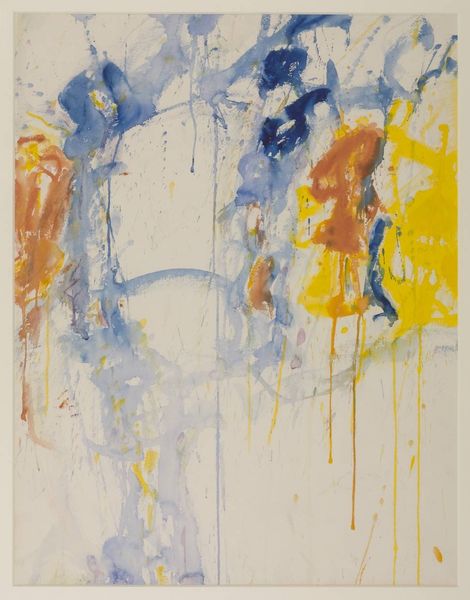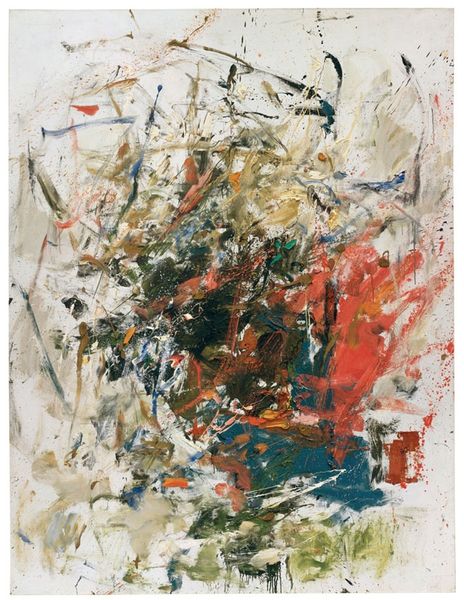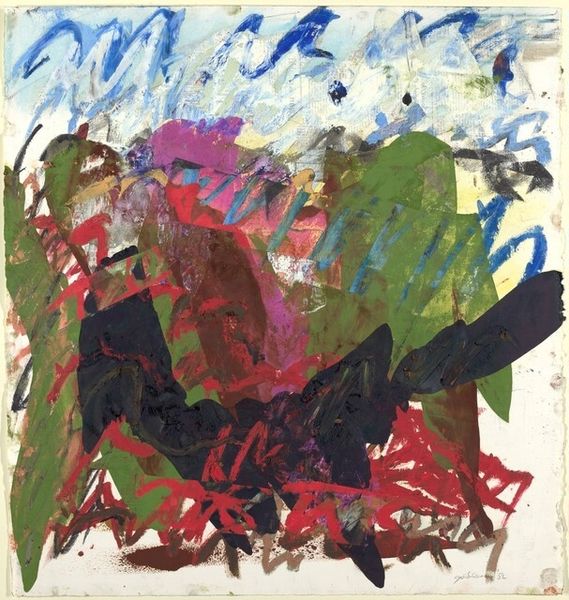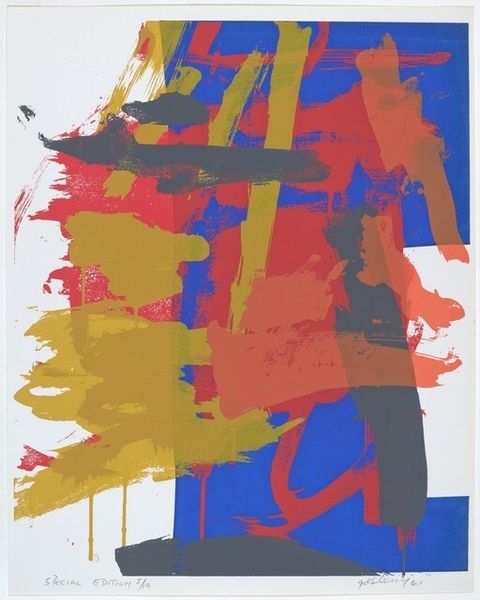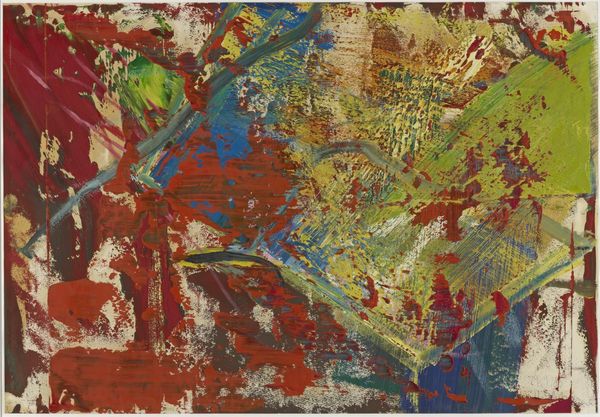
#
natural stone pattern
#
abstract expressionism
#
abstract painting
#
egg art
#
handmade artwork painting
#
tile art
#
fluid art
#
acrylic on canvas
#
paint stroke
#
watercolor
Copyright: Hans Hofmann,Fair Use
Editor: Here we have Hans Hofmann's *Cataclysm*, created in 1945. It's an explosion of color and texture using, it seems, acrylic on canvas. The overall impression I get is of chaos, of something being ripped apart. What strikes you when you look at this piece? Curator: Given the historical context of 1945, immediately following the Second World War, the title itself, "Cataclysm," resonates powerfully. Hofmann, as a German émigré in America, was acutely aware of the socio-political upheavals of the time. How might the cultural anxieties of that era be reflected in his artistic choices, do you think? Editor: I can see that. The shattering effect of the colors and their arrangement maybe a direct emotional response to that instability and destruction that existed in 1945. Does that link to why Hofmann chose such explosive techniques with the paint, with dripping and splashing? Curator: Precisely. Hofmann was experimenting with pushing and pulling colors, creating spatial tensions that mirrored the psychological tensions of the post-war world. We also have to consider the growing prominence of abstract expressionism as a rejection of traditional, representational art forms. Could *Cataclysm* also be interpreted as a declaration of a new artistic and social order? Editor: I hadn’t considered that it could be a conscious move away from what was considered traditional art, rather than just responding to what he felt at the time. Curator: Think of the institutional shifts. Museums and galleries in New York were increasingly showcasing abstract art, establishing America as a new center for avant-garde art. *Cataclysm* became part of this movement. The politics of imagery was really shifting then. Editor: I'm learning so much about looking at the background as much as at the brushstrokes. Thanks, that gives me plenty to think about! Curator: Indeed! Seeing art as interwoven with its time gives us new perspectives.
Comments
No comments
Be the first to comment and join the conversation on the ultimate creative platform.
